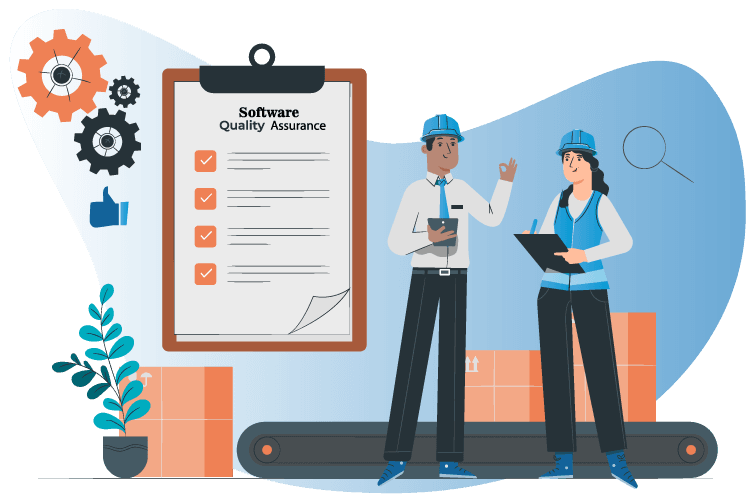
Q Quality Software requires best practices for QA Process Setup. Our development discipline shows that an incompetent QA process enhances the risk of a project’s setback by a minimum of 25% and varieties of bugs that drive away users and pretend a threat to business succession.
A highway to a project’s success is an aligned and structured QA process with regularly conducted testing activities. Planning a brilliant QA strategy and offering a stable QA process trigger such long-term improvements as:
- A 25% gain in testing speed,
- A 30% gain in software quality,
- At least a 40% reduction in project costs.
P5infosoft takes the following to design QA processes for customers, to set up a stable QA process and attain the above benefits.
- Establish context
- An effective QA process is the one that matches the characteristics of the software. The test aligned with the testing processes that already ascertained within an organization and a project. The information obtained throughout this stage helps in the groundwork for customizing a future QA process. Thus, before reaching down to designing a QA process, we at P5infosoft review the specifications of a customer’s domain, organization, project, and software.
- Analyze quality risks
- After acquiring an understanding of the software under test, we classify and analyze critical uncertainties about software quality, evaluate each change’s feasibility and inherent impact, and document the conclusions. This helps us develop a future QA process and consider all possible uncertainties and ascertain the scope and precision testing with each functional software module.
- Estimate efforts
- At this point, setting quality objectives and estimating the time and cost required to attain the testing. For that, P5infosoft’s test leads apply a range of techniques. We prefer a work breakdown structure, dividing software under test into modules. Each module’s complexity is described together with testing exercises required to approve each of them and the allocation of these exercises to appropriate test team members. Based on that, the duration and costs of the tasks are attached to each tester. More on any project has uncertainties, so we append some buffer time to the calculation to counterbalance for possible delays.
- Define the test team
- Based on the testing scope and distinguishing the significant skill sets required for the test team, members are allocated. If there is a gap between our test team members’ needed skill sets and skill set, consider developing support via injecting a dedicated team or staff development. To guarantee the highest quality of testing, we break test design as functional test execution, automated script design, and automated test execution between dedicated team members with appropriate expertise.
- Design a test plan and develop a test system
- After a general estimation is ready, we look for the critical strategic and tactical aspects of quality assurance for the project, conclude a testing strategy, and create a test plan. In this test plan, we cover an overall strategy for software testing, the scope of testing types to be included, and an approach to bug management. To determine more details at this stage, we also create suitable environments for testing and describe the conditions to test data.
Is the QA process done? What’s next?
- It is fallacious to believe that you can deliver excellent software without spending effort in overhauling the traditional QA activities once you have set a QA process up.
- We at P5infosoft believe in review and update regularly; despite a flawlessly designed QA process. To make sure our QA process indicates the modifications introduced to software or other project processes, we want to implement formal QA process audits to expose incompetence and unveil the domains for further improvement.
Related Posts
While searching for a custom application development services, there are certain things you must...
Development is a core part of the initiative, whether you’re a startup with an...

